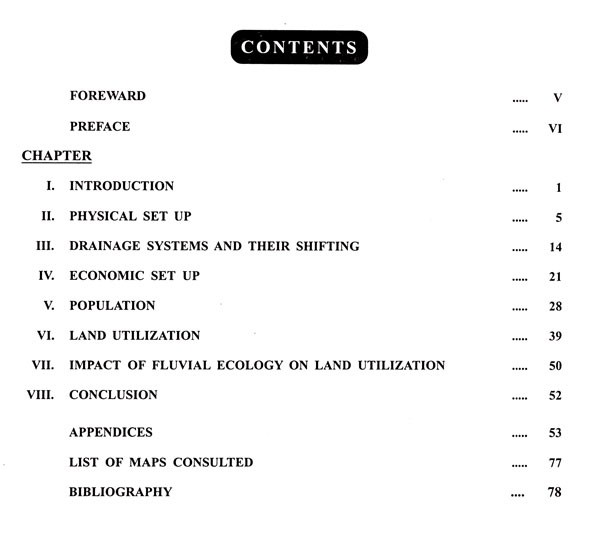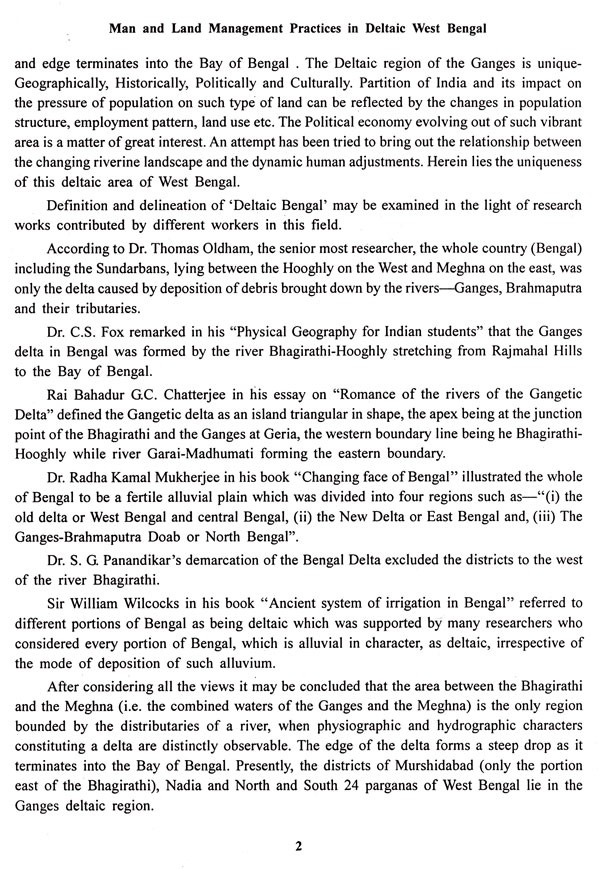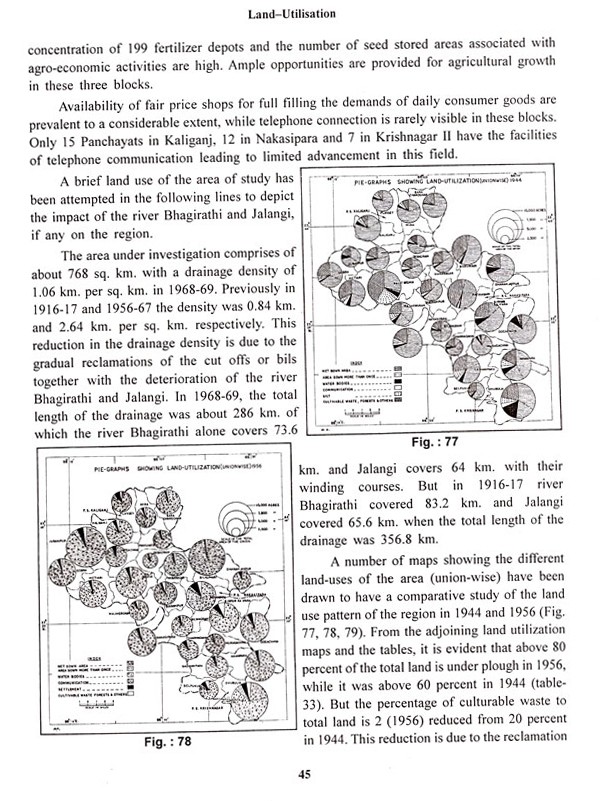
Man and Land Management Practices in Deltaic West Bengal
Book Specification
| Item Code: | NBZ264 |
| Author: | Kanan Chatterjee |
| Publisher: | University of Calcutta |
| Language: | ENGLISH |
| Pages: | 88 (Throughout Color and B/W Illustrations) |
| Cover: | PAPERBACK |
| Other Details | 9.20 X 7.10 inch |
| Weight | 170 gm |
Book Description
Space and population are indeed the most essential ingredients of Geography. Space in Geography is synonymous with resources-animate and inanimate. It also builds up the environmental complex in which human beings operate. Geographers are engaged in planning land use and housing etc. They have shown their importance in national and international agencies that deal with the study, inventory and administration of natural and human resources.
To work out strategies in the management of resources application of technology is obviously required. Thematic Scientists have to be exposed in their own application areas.
As we enter the decade of seventies, deterioration of the Bhagirathi-Jalangi focuses on our attention. The Department of Geography, Calcutta University had earlier made an extensive study of the deltaic problems relating to the Ganga.The dynamics of the delta formation, its ecology and adaptation had already been discussed in a University publication entitled “The Ganges Delta”.
This book has been written with an objective to introduce the land management technology to the application scientists in India. Still it may be of interest for some users to refer to books on agriculture, soil and population etc. for more details as the scope of this book has its own limitations, particularly regarding availability of data. This idea is to provide a comprehensive analysis of the land – use scenario of delta region of West Bengal. The intention here is not to bring a text book, but institutions, teachers and students may find that it covers their course contents in one way or other. It is hoped that the publication will generate desired enthusiasm and thinking in this field.
This book has become valuable to me because Dr. Prithwish Nag, Director, National Atlas and Thematic Mapping Organization of the Ministry of Science and Technology, Government of India, has kindly agreed to write the “Foreword”. He has been a source of inspiration for writing a book on land utilization and its management. I am grateful to him. Needless to say, University of Calcutta, Kolkata, gladly accepted my proposal to bring out this book. I am thankful to the University of Calcutta and the Vice Chancellor in particular for this publication.
The geographers of Calcutta University have a special inclination to study the delta region of the state of West Bengal. They have patronized this area and the issues related to the human adjustments with relatively dynamic topography. Professor Kanan Gopal Bagchi's book on “The Ganges Delta” also tries to analyze this delicate relationship. The present volume by Professor Kanan Chatterjee is in a way continuation of such a tradition.
Location of Nadia District is unique-geographically, culturally, historically and politically. The Jalangi-Bhagirathi interfluve and several topographical features created by them make this area a laboratory of geographers. Generally, a swampy low-flat area without any definite line of drainage', with numerous rivers, backwaters, minor streams, swamps, low-lying ill-drained tracts, decaying rivers and the like have made this area extremely interesting.
The pressure of population on such type of land can be reflected by the changes in population structure, employment pattern, cropping intensity and land use. Over eighty percent of the land is under cultivation. It has the highest cropping intensity in the state which has steadily increased from 236 in 1995–96 to 276 in 2002-03. This is due to bringing more and more land under rice cultivation, particularly aman rice. This is obviously at the cost of other minor crops. The land of the district provides suitable condition for paddy cultivation. The smaller water bodies and over flowing low-lying areas make a better option for this cultivation. Moreover, the soil conditions have also generally supportive. Hence such high cropping intensity came into existence. The high capacity deep tube wells, shallow tube wells and river lift irrigation has further helped in sustaining agriculture and thereby higher population density. Out of the total male workers, nearly 48.58 percent workers are engaged in agriculture.
The picture is not always rosy. The changing landscape with environment has taken its toll. There is a continuous adjustment and readjustment of population, economy and livelihood with land. Gradual decay of rivers, big and small, silting of channels, unproductive soils owing to stoppage of spill action, floods and human interference have made the population most vulnerable. The political economy evolving out of such vibrant area is a matter of great interest. In this volume, the author has made a successful attempt to understand the delicate balance of the nature and its ramifications. This contribution may be considered as a model for researches on similar lines. It will definitely inspire other researchers to make comparable enquiries in future as well.
**Contents and Sample Pages**










